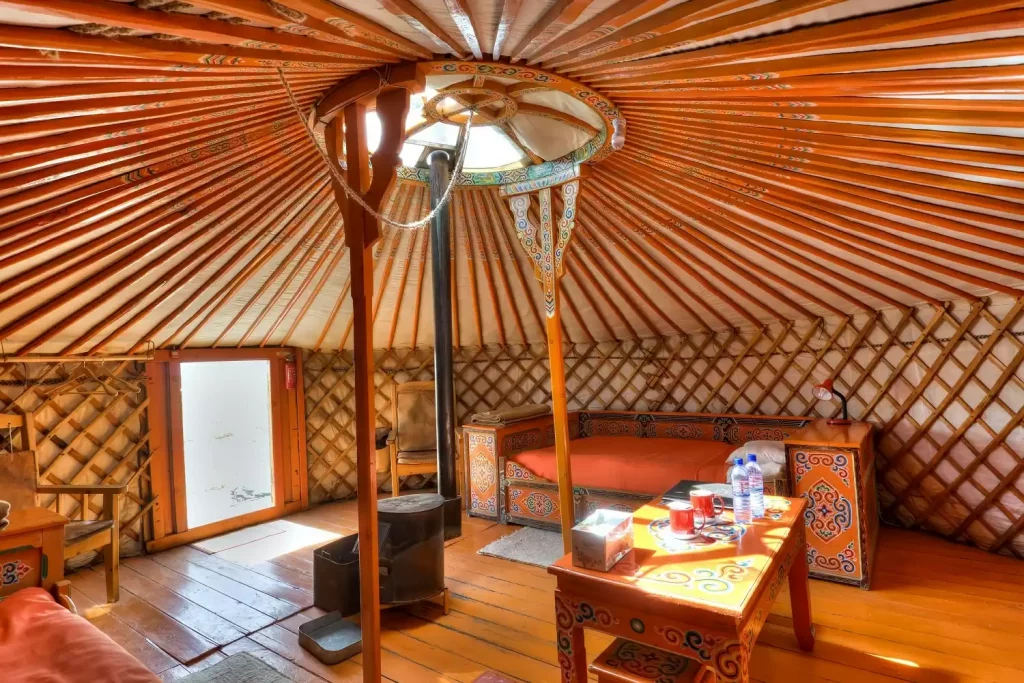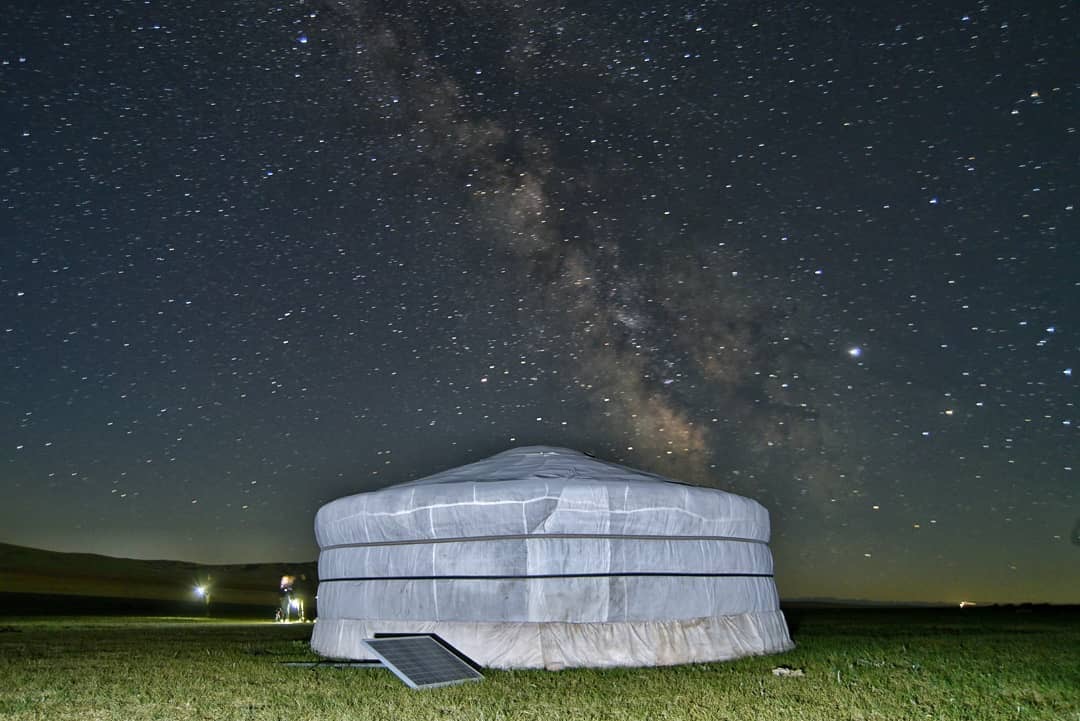We enjoy city life, perhaps you do too. But whatever the preference, we sometimes long to have a little quiet time outside the noisy, and oftentimes overwhelming city life.
So let’s take a break and try something new: not five-star hotels, but a Mongol ger under the 5 billion stars.
Researchers believe it has been over 3,000 years since the nomads started living in a ger. It’s a well-known fact that the nomadic tribes of Central Asia have dwelled in ger-like structures for centuries. The design and structure of a modern ger is still very similar to ones from the 13th century – in other words, the Mongol ger hasn’t changed much since. The word ger literally means ‘home’. As gers are easy to construct and take apart, people can effortlessly move and set up one in a new location. It only takes about two hours for a 3 – 4 people to reassemble it. Its circular shape makes it appropriate for the harsh weather of Mongolia. Made of felt it is suitable for any season as it can retain heat and ventilate air naturally. Ger is also highly resistant to dangerous natural occurrences, such as storms and earthquakes.
The door always faces south. By looking at the sunlight through the crown of the ger, one can tell the time, and then run errands accordingly. For example, it is considered midday if sunlight shines to the north (or khoimor) of the ger. These are just some of the countless conveniences of living in a ger.
In the late 19th century, over 100 different ethnic groups dwelled in gers. Some Russian tribes such as Kalmyk, Tuva, Tatar, Central Asian Kazakhs, Turkmens, Uzbeks, Tajiks, Kyrgyz, Turkish and hazaras (Afghanistan) still dwell in gers.

Every part of Mongol ger reflects Mongolian culture and tradition. Even the effort of entering a ger has its own traditions. North part of the ger facing the door is the most respected area – deities of worship and chests holding personal belongings are located here. Although Mongolians are hospitable to guests, it is inappropriate for a guest to sit at the rear area of a ger without invitation. It is not allowed to touch or lean on the columns of a ger as it holds the weight of the ger. Remember these when you visit a family living in a ger.
The inside of a ger has dedicated areas for both men and women. Kitchen tools, water containers, milking pails are located to the east or so-called the women’s side; saddles, bridles and shackles are located on the west side. Even though gers do not have rooms, it is quite organized.
A Mongol ger consists of coating and wood frames. The wooden parts contain the crown, roof poles, walls, floor and the door. The coating consists of felt and cotton sheets. The size of a ger is measured by the number of wood frames or the “khana”. In most cases, there are 4, 5, 8 or 10-wall gers. The walls are connected to the poles, and should match the size of the crown.
Evolution of ger
As times are changing, ger is changing too. However, it is changing for convenience, not in its entirety. “Ayanchin” ger is a “foldable” ger which can be easily transported in the trunk of a passenger vehicle while still maintaining the traditional structure of a ger. It can fit into two separate bags and weighs 50 kg, effectively reducing the size of a ger by 4 – 5-fold. It is often used by travelers instead of a tent. You can build a fire inside it and put small furniture of your liking. Despite its size and mobility, 10 people can comfortably spend the night in it.

As the world is urbanizing at high speed, more and more city dwellers wish to live closer to the nature. Following this demand, the Mongol ger has become an interesting and efficient dwelling for foreign travelers. An American company “Pacific Yurts Inc” have introduced their custom-made Mongol gers. There will always be a special space for Mongol gers, no matter how many modern buildings are built. But it will definitely evolve over time according to user’s needs and convenience. It is often suggested to experience ordinary and traditional lives of particular ethnic people to better understand its people. Come to Ulaanbaatar, the city with the most gers in the world, and explore the nature and feel peace.
“Once you stay in a Mongolian ger, you wonder why across the planet so many of us live in rectangular spaces. From the first time I stepped across the threshold of a ger and was invited to sit in to the left of the altar, I was hooked. Not only does the circular space have an intrinsically sacred and natural feel to it, but the experience is a treat to all the senses.
The reassuring smell of the felt; the sound of bubbling tea and the shafts of light coming through the circular hon – all compliment the overriding feeling of being home and nurtured. I could wax lyrical about all of the details and quirks that I love about gers – from underground cold storage, decorative trunks tidily containing a household’s precious possessions, the horse hair knot symbolism or the numerous superstitions.
We have shipped traditional Mongolian gers to the UK which have been classrooms for children, retreats in nature, refuges for troubled people. For those of us lucky enough to have gers in our lives, much of the pleasures and sense of universal harmony are hard to convey.”

Karina Moreton
Traveler, Anthropologist
source: mongoliatravel.guide

